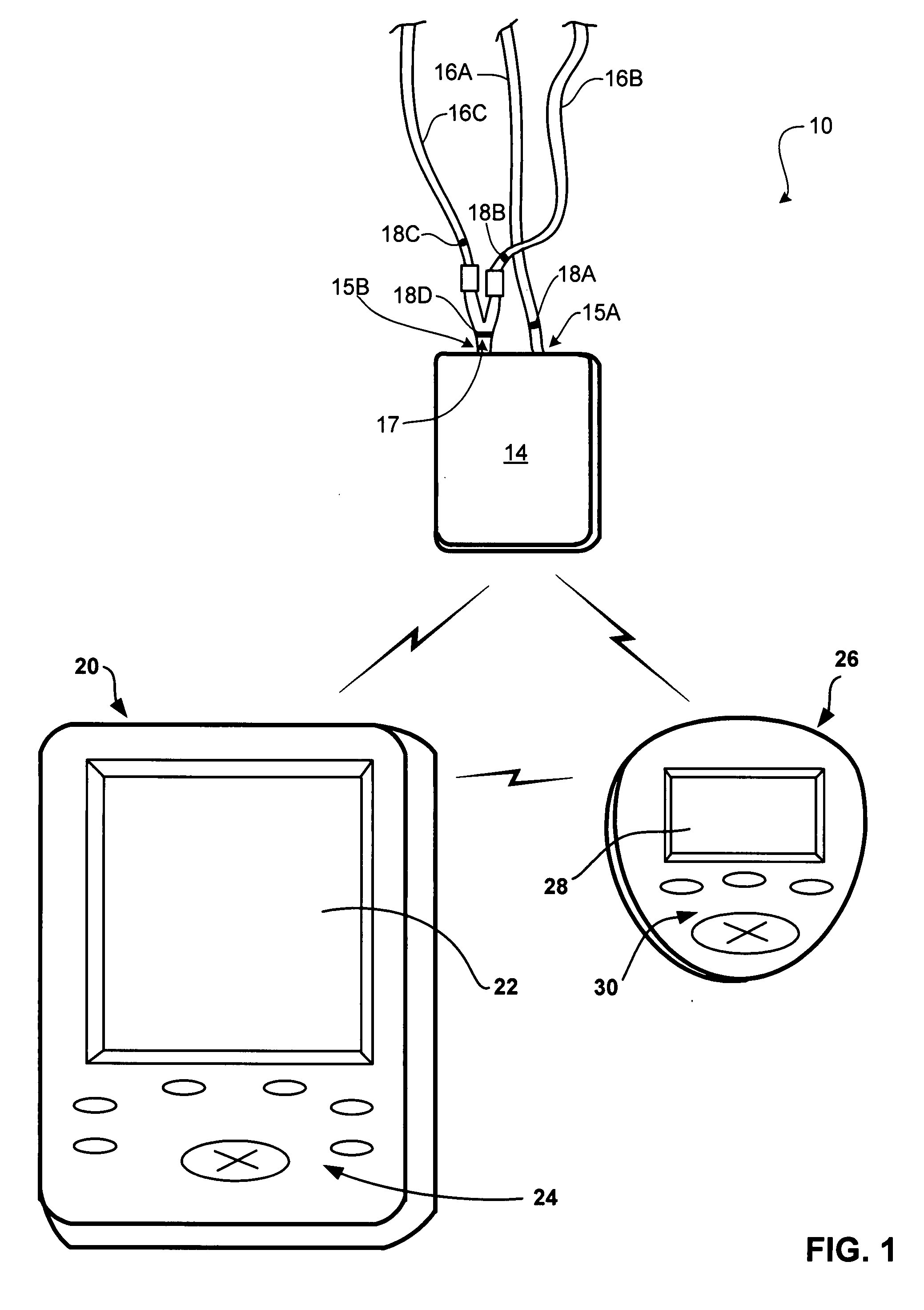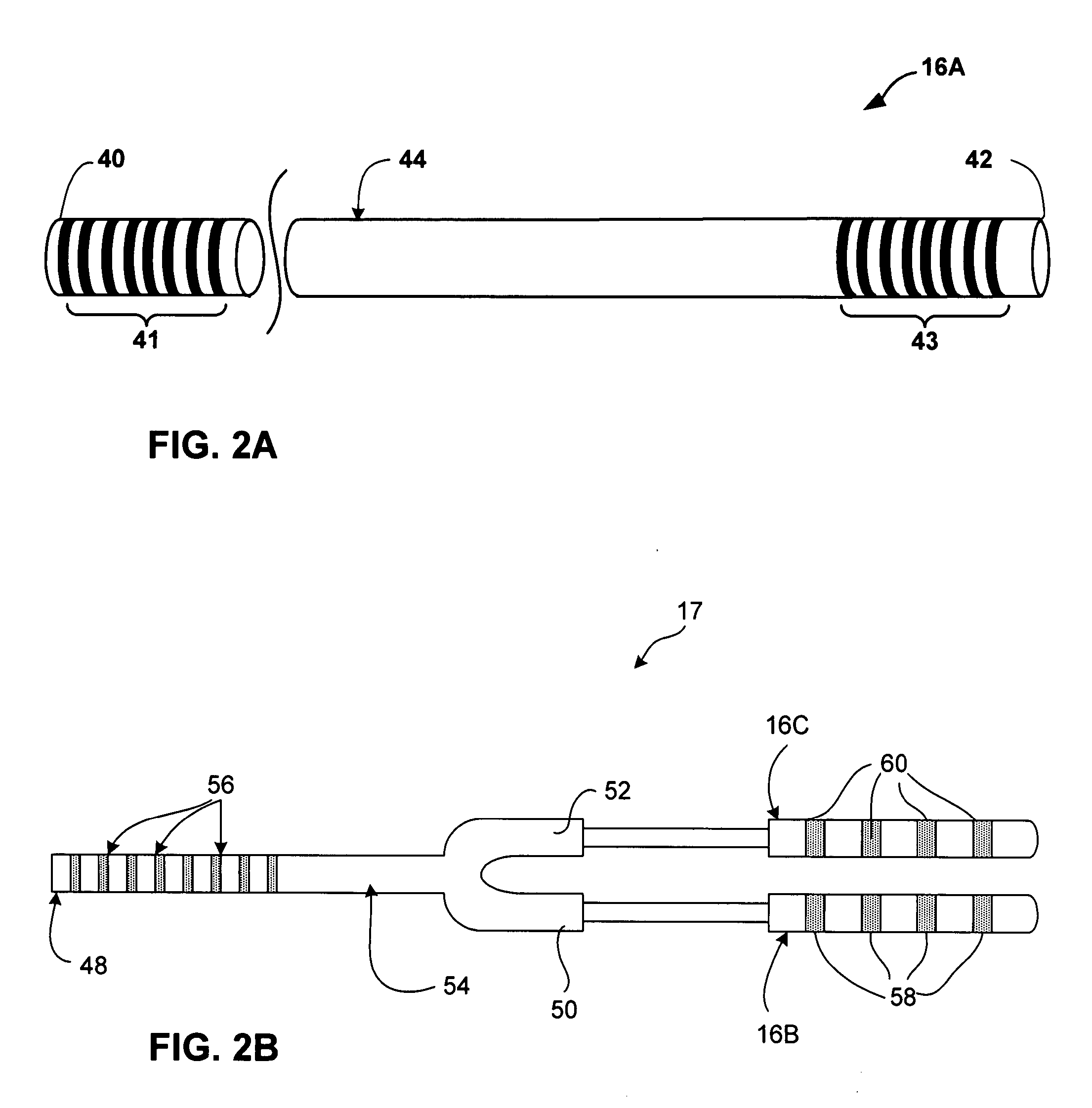Selecting electrode combinations for stimulation therapy
a stimulation therapy and electrode technology, applied in the field of electric stimulation therapy, can solve the problems of reducing the scope of search, reducing the amount of time a clinician spends, and requiring a great deal of trial and error
- Summary
- Abstract
- Description
- Claims
- Application Information
AI Technical Summary
Benefits of technology
Problems solved by technology
Method used
Image
Examples
example 1
COMPUTER MODELING EXAMPLE 1
[0180] Data relating to a plurality of electrode combinations was obtained using computer modeling of lower thoracic placement of electrodes using a first computer modeling technique. The data was for the electrode combinations that included electrodes within less than three columns (i.e., a combination from the first class), at least one transverse electrode combination, and at least one longitudinal electrode combination (i.e., combinations from the second class). In the first model, a McIntyre-Richardson-Grill myelinated fiber model was used, in which the medial dorsal column fiber is about 12.8 μm (31 nodes) with a 5.7 μm collateral (10 nodes) and the dorsal root fiber is about 15 μm (8 nodes) and attaches to the 12.8 μm (31 nodes) longitudinal fiber in the lateral dorsal column.
[0181] Three columns of electrodes were modeled, where the electrodes were arranged in a 4-8-4 arrangement. A low thoracic spinal cord model utilized in the first computer mod...
example 2
COMPUTER MODELING EXAMPLE 2
[0186] A second computer modeling technique included calculating the direct effects of electrical stimulation of the spinal cord using various electrode combinations and geometries using a second computer model, the University of Twente Model. The spinal cord stimulation (SCS) computer model basically consists of a volume conductor model of the spinal cord and its surroundings, and an electrical model of the myelinated nerve fibers in the spinal cord.
[0187] Descriptions of the SCS computer model and of the methods applied in this report are described in a number of previously published papers, including: How do geometric factors influence epidural spinal cord stimulation? J. Holsheimer, J. J. Struijk, Stereotactic and Functional Neurosurgery, vol. 56, pp. 234-249, 1991, Effects of electrode geometry and combination on nerve fiber selectivity in spinal cord stimulation, J. Holsheimer, J. J. Struijk, N. Tas, Medical & Biological Engineering & Computing, vol...
example 3
COMPUTER MODELING EXAMPLE 3
[0194] In a third computer modeling example, a plurality of electrode combinations from each of the two classes were modeled for two different cerebral spinal fluid (CSF) depths. A first depth of 3.8 mm represents a lower thoracic region of the spine and a second depth of 2.4 mm represents a cervical region of the spine. The electrode combinations that were tested are shown in FIG. 17A, and given the alphabetic designators A, B, C, D, E, and F. The third computer model suggested that guarded cathode electrode combinations (B-F) provide a lower recruitment ratio compared to unguarded bipolar electrode combination (A). Thus, if a clinician is interested in achieving a lower recruitment ratio, either electrode combination B from the first class or electrode combinations C-F may be selected as trial electrode combinations for further testing. A “trial electrode combination” does not necessarily indicate that the electrode combination is tested during a trialin...
PUM
 Login to View More
Login to View More Abstract
Description
Claims
Application Information
 Login to View More
Login to View More - R&D
- Intellectual Property
- Life Sciences
- Materials
- Tech Scout
- Unparalleled Data Quality
- Higher Quality Content
- 60% Fewer Hallucinations
Browse by: Latest US Patents, China's latest patents, Technical Efficacy Thesaurus, Application Domain, Technology Topic, Popular Technical Reports.
© 2025 PatSnap. All rights reserved.Legal|Privacy policy|Modern Slavery Act Transparency Statement|Sitemap|About US| Contact US: help@patsnap.com



